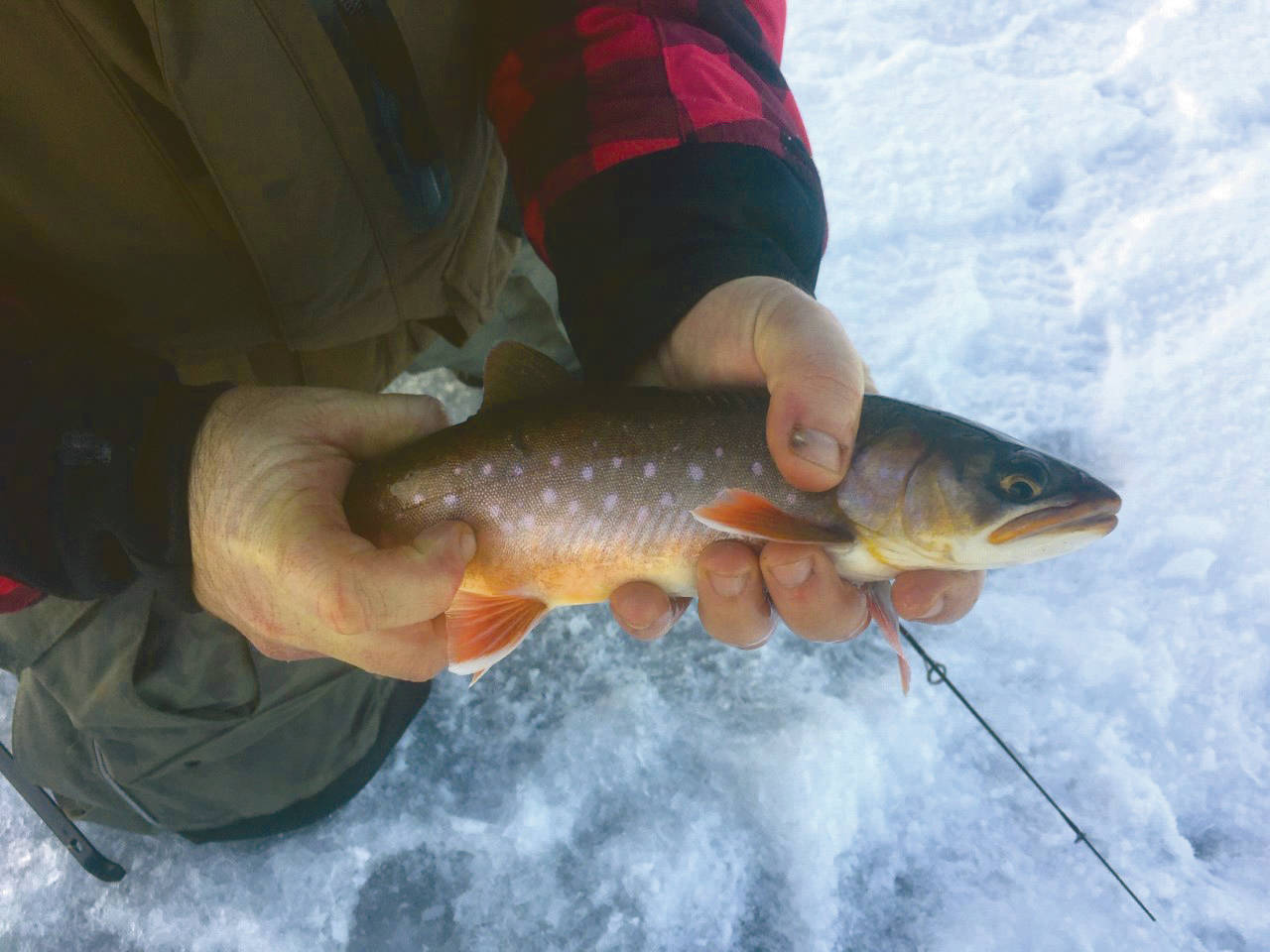Winter is my favorite season here on the Kenai Peninsula. Everything is slower, quieter. You can just sense that the energy is calmer than the middle of summer when the salmon are running and the tourist season is in full swing.
In my opinion, one of the best ways to enjoy the refuge for an easy afternoon family outing or to experience solitude is to visit the Swanson River-Swan Lake roads corridor and Swanson River Canoe Route. This area has a multitude of options for ice fishing in the winter.
Whether you’re interested in parking near a lake and taking a short walk onto the ice to start fishing immediately, wanting to travel deep into the Dave Spencer Wilderness by a network of trails and portages and camp overnight, or whether you’re looking for something in between, this area offers it all!
If you’re like me, you enjoy fishing on a lake without any other people around because solitude gives me time to take in and enjoy all that nature has to offer. When I am deciding which lake to fish that day, Plan A is always to fish a lake with no vehicles at the parking lot or trail head.
If on the off chance there is already a vehicle parked where I had decided to go, it’s not a problem, I activate Plan B and drive a short distance and find another place to fish. There are many options and you’re sure to find a spot to yourself if you look around.
We are extremely fortunate to live in an area where we have these beautiful resources and relatively little competition when it comes to exploring them.
While on duty, driving down the Swanson River or Swan Lake roads, I often get asked by visitors, “Which lake is good for fishing?” My answer is simple, all of the lakes that have fish are excellent.
In my experience of fishing the area for the last five winters, I can’t recall ever getting skunked. Intuition would say that the lakes closest to the road area would be less productive than a lake deep in the wilderness due to the increased fishing pressure, but I’m not convinced that’s necessarily the case.
I have been pleasantly surprised by catching fish on lakes that I would have thought might not be so productive, such as Dolly Varden and Rainbow lakes.
Of course some days are better than others, and some extremely experienced and cognizant fisherman can point to solar/lunar cycles, barometric pressure anomalies or other weather patterns that influence fish behavior. But I have always had pretty good luck fishing regardless of the lake.
A good, simple and efficient technique is to fish in about 8 to 12 feet of water around points or between an island and shore. I like to use an artificial lure called an Eagle Claw Paddle Bug. Simply drop the lure down to about 1 to 2 feet off the bottom and very lightly give it a twitch and stop.
Most of the time I have found that the fish will hit it when it is completely still. In fact, I’ll find myself not paying attention at all to my fishing but instead thinking about something else or listening to some wolves howl in the distance when suddenly I’ll feel a bite and have the pole about pulled out of my hands.
Mature rainbows, Dolly Varden and Arctic char will often patrol around the shallows of a lake seeking food such as young fry or invertebrates that prefer to inhabit cover such as aquatic vegetation or downed trees. There are a million different ways to catch fish around here but this is the best way I have found for myself.
Some of the other fishermen I have talked to like to use big spoons and jig off the bottom. Others prefer to use a piece of cooked shrimp and fish in deep water. I would say to experiment and see what works best for you.
There are several species of fish present in the area including rainbow trout, Arctic char, Dolly Varden and some silver and sockeye salmon. Also remember that fish are present on most lakes but there are a few that do not have any sport species present.
Check the Kenai National Wildlife Refuge website at https://www.fws.gov/refuge/Kenai/map.html for an array of area, trail and lake bathymetric (topo) maps that can give you specific details about access and which species of fish are known to be present in individual lakes.
I wish everyone good luck! But either way, you’re sure to have a good time and see some incredible scenery right in our own backyard.
Nate Perrine serves as Fire Operations/Fuels Technician for the Southern Alaska Refuges Fire Zone, which includes Kenai National Wildlife Refuge. Find more Refuge Notebook articles (1999–present) at https://www.fws.gov/Refuge/Kenai/community/Refuge_notebook.html.
By NATE PERRINE
Kenai National Wildlife Refuge

